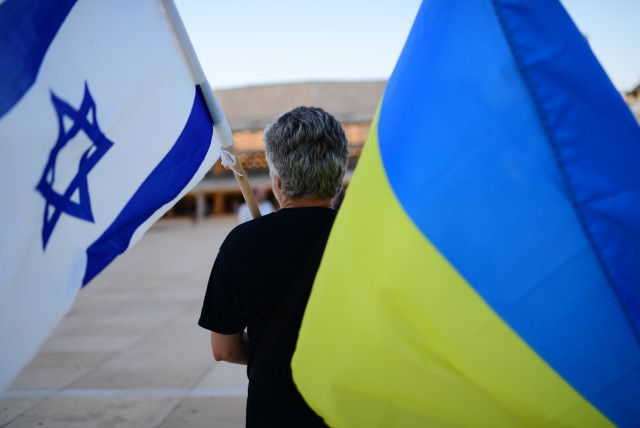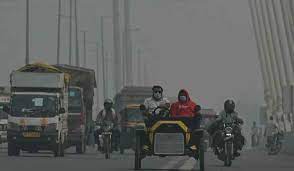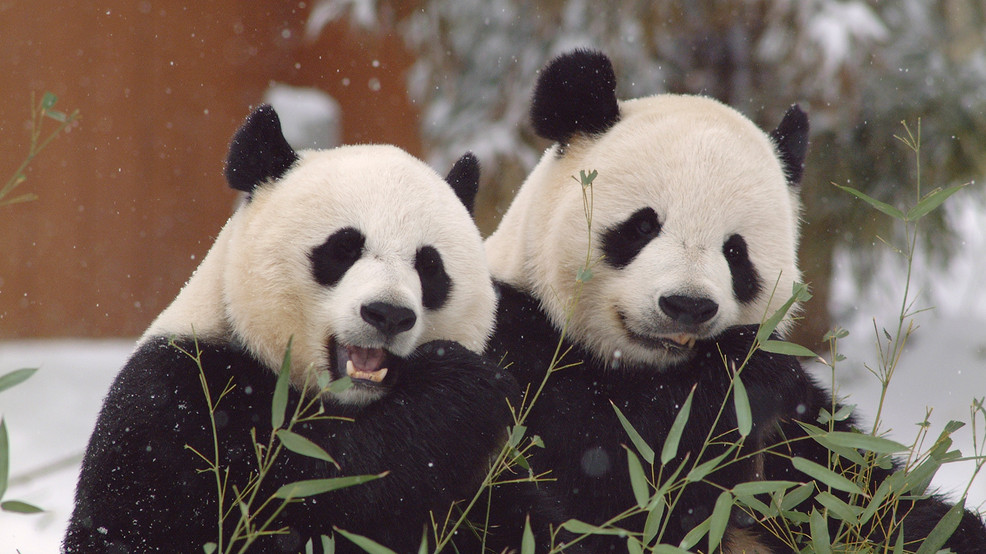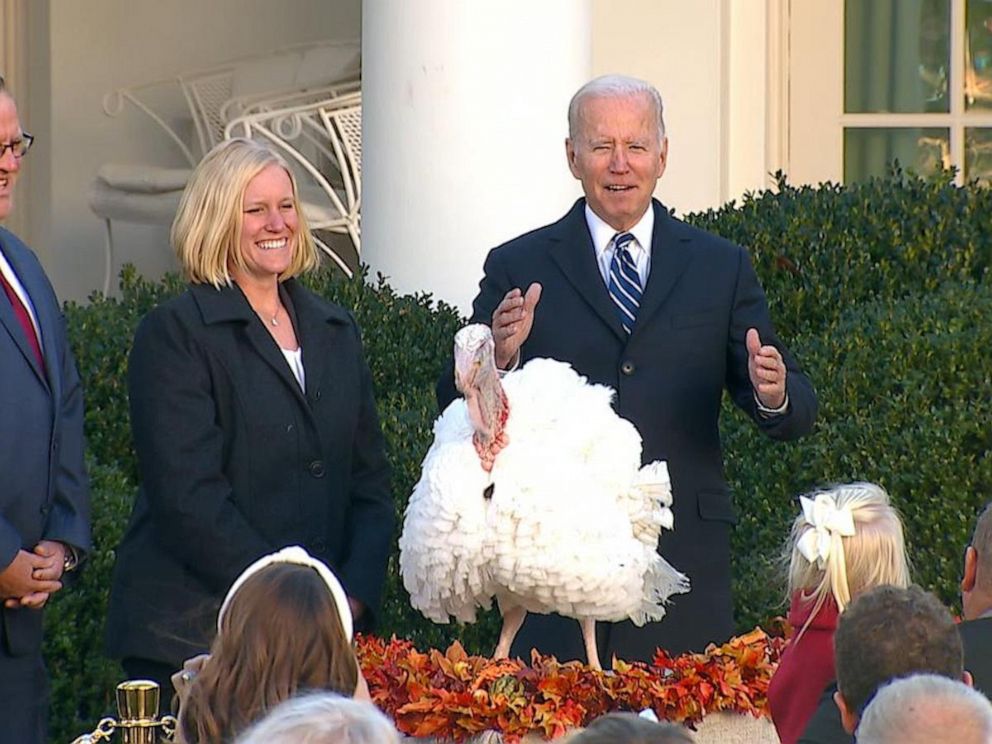뉴스&스피킹(영자신문)
하루 10분이면 영어에 대한 두려움을 극복하고 누구나 유창하게 영어를 구사하실 수 있습니다.
-
 Ukrainians in Israel Face War Conditions Again Thousands of Ukrainians decided to flee war in their country and head to Israel after Russian forces invaded in 2022. But now those people are facing war conditions again as Israeli forces continue battling Hamas militants.
Ukrainians in Israel Face War Conditions Again Thousands of Ukrainians decided to flee war in their country and head to Israel after Russian forces invaded in 2022. But now those people are facing war conditions again as Israeli forces continue battling Hamas militants.
Tatyana Prima fled to southern Israel from the southeastern Ukrainian city of Mariupol 18 months ago with her husband and young daughter. The 38-year-old was thankful to arrive safely to Israel and thought she and her family had finally left the bombs behind.
But Prima’s sense of safety and calmness disappeared when Hamas militants invaded Israel on October 7. “All these sounds of war that we hear now, they sometimes work as a trigger that brings back memories of what we've gone through in Mariupol,” she said.
The Israeli government estimates more than 45,000 Ukrainians have fled to Israel since Russia invaded Ukraine in February 2022. Most of the refugees were trying to deal with war trauma experienced back in Ukraine when conflict broke out in Israel.
Some have left Israel, but many remain and are refusing to again flee a war. Most have lost in-person support systems because of restrictions in Israel involving gatherings. Others have lost hope of reuniting with loved ones they left behind in Ukraine.
When Hamas militants attacked on October 7, they killed about 1,200 people and took about 240 hostages. On that day, Prima awoke to the sound of alarms. She lives in the coastal city of Ashkelon, a few kilometers from the Gaza Strip. The crash of airstrikes and shelling has been continuous, as Israel pushes forward with its offensive against Hamas. Prima describes the situation as “deja vu,” bringing back similar memories from Ukraine.
Mariupol was one of Ukraine's hardest-hit cities in the war with Russia. The city was cut off and bombarded for weeks as people struggled for food, water and heat. During the war's early weeks, Prima cooked over an outdoor fire, used snow for drinking water and sheltered with other relatives just outside the city.
As the shelling intensified, rockets fell around where Prima and her family stayed. After an incident in which her husband's hand was blown off while he searched for water, she decided to leave. The family arrived in Ashkelon in April 2022 and joined relatives of her husband there.
Israeli defense systems block most incoming missiles from Hamas. But at least 80 have landed in populated areas or empty fields in Israel since the war began, the Armed Conflict Location & Event Data Project reports.
Prima said the conflict has intensified her feelings of isolation. This is because her community support groups have moved most activities online because of government restrictions on gatherings in public.
Koen Sevenants is a mental health specialist who has worked with refugees and displaced people in several conflict areas. He told The Associated Press (AP) he finds such individuals often experience "hopelessness.” Experts warn that if people who have not fully recovered from one traumatic incident are victimized again by a new one, the event that caused the trauma can seem worse.
Refugee organizations have offered financial and food assistance to people in Israel who do not feel safe leaving their homes. But Olya Weinstein said these groups are not equipped to help all those in need. Her organization, Project Kesher, has been helping about 6,000 people who fled Ukraine, mostly with food.
Ukrainian President Volodymyr Zelenskyy said an unknown number of Ukrainians remain trapped in Gaza. Ukraine said at least 160 of them have been safely removed. Gaza’s Health Ministry has estimated more than 12,700 Palestinians – most of them women and minors – have been killed since the war began. That number includes both civilian and Hamas militant deaths.
I’m Bryan Lynn.View -
 Indian Cloud-seeding Project Aims to Produce Rain to Clear Pollution Indian scientists plan to add substances to clouds above the capital New Delhi in an effort to produce rain to reduce pollution.
Indian Cloud-seeding Project Aims to Produce Rain to Clear Pollution Indian scientists plan to add substances to clouds above the capital New Delhi in an effort to produce rain to reduce pollution.
The method to artificially produce rain is called cloud seeding. The process involves adding different chemicals to clouds to cause rain. When rain falls from the sky, water droplets can attach to pollution particles and bring them down to the ground.
New Delhi has been rated the city with the most air pollution in the world. Reports say the problem has worsened across the city in recent weeks.
Air quality decreases in the city ahead of winter each year. During this time, cold air can trap many pollutants, including gases from vehicles, industry, building projects and agricultural burning.
Scientists expect some clouds over the city around November 20. They hope the clouds will result in heavy rainfall – when sprayed with a salt mixture.
The project is being led by Manindra Agrawal, a scientist at the Indian Institute of Technology in the central city of Kanpur. He told Reuters news agency the salt mixture will include silver iodine to help produce rain. It is to be sprayed on clouds over a 100 square kilometer area. Agrawal said the project will cost about $120,000.
The local government in New Delhi, a city of 20 million people, has already closed schools, stopped building activities, and said it will place restrictions on vehicle use to control pollution.
The air quality index in the city was 506 on November 9. This level is considered "hazardous" by IQAir, a Swiss company that describes itself as an “air quality solutions” business.
Gufran Beig is head of the Indian government's air-quality measuring agency SAFAR. He told Reuters the city needs heavy and widespread rain to wash away the pollutants. Beig added that light rain could worsen the situation.
The SAFAR head said current airflow is carrying smoke from crop burning in the states of Punjab and Haryana to Delhi. This smoke adds to the city’s existing pollution sources. "So, unless a huge pressure is established by intense rain, this chain of transport from Punjab to Delhi will not be broken,” Beig said.
About 38 percent of pollution in the capital has been caused by stubble burning in Punjab and Haryana, a recent government statement said. Farmers carry out stubble burning to clear material left behind from rice harvests so they can plant other crops. Indian officials directed leaders in both states to "take effective actions" to identify and limit stubble burning, the statement added.
Officials in New Delhi are seeking approval for the project from the Supreme Court, Reuters reported.
Several countries have used cloud seeding in an effort to produce rain, improve air quality and water crops in times of extreme dryness. These include Mexico, the United States, China, Indonesia and Malaysia.
I’m Bryan Lynn.View -
 Drug Trials Often Do Not Include Overweight People More than 40 percent of American adults are considered obese, or medically overweight. But the medications many of these individuals take are rarely tested in bigger bodies.
Drug Trials Often Do Not Include Overweight People More than 40 percent of American adults are considered obese, or medically overweight. But the medications many of these individuals take are rarely tested in bigger bodies.
Obese people are currently not required to be included in drug studies. Often, they are purposefully left out.
This is a problem because the amount of drugs an obese person should take to be safe is unknown, says Christina Chow. She is a researcher who has sought to bring attention to the need to include obese people in drug development and testing. “There’s no real emphasis for them to be studied at all,” Chow told The Associated Press.
Medications can work differently in people who are obese, but exactly how and at what amount is not clear. Research suggests this includes antibiotics and antifungal drugs, medications used to treat serious infections. It even includes ibuprofen, a commonly used painkiller that can be bought without a doctor’s orders.
The U.S. Food and Drug Administration (FDA) and the National Institutes of Health (NIH) are the agencies that control and provide money for drug testing. At a gathering last year, FDA Commissioner Dr. Robert Califf noted a “deficit of evidence” about how medicines act in patients who are obese. The NIH now asks researchers to think about the results of not including obese people in their studies, an agency spokesperson said.
At a recent medical conference, Chow presented a review of more than 200 studies for new drugs in the U.S. last year. Nearly two-thirds of the studies failed to include weight or body mass index, a numerical value noting if a person is obese.
Historically, some populations have not been included in drug testing to avoid harm, including pregnant women and children. In the past, women, racial and ethnic minorities and aged people have also not been included.
Dr. Caroline Apovian is a researcher at Brigham and Women’s Hospital in Boston. She is the co-author of Chow’s study. Apovian told the AP there are many reasons people who are obese are not included in drug tests.
She noted that people who volunteer for trials are often thin and healthy and this does not effectively represent the general population. Obese individuals can have many health difficulties, and researchers often worry this will affect results of their work.
“Sometimes patients with obesity have many more comorbidities than others. They’ll have more diabetes, more heart disease, more strokes,” Apovian said.
But if drugs are not studied in a condition that affects 42 percent of the U.S. population, the real-world effects can be dire, experts say.
Some drugs remain in the body longer in obese people. That could result in harmful drug interactions if another medication is added too soon. There can also be less medication in the blood, leading to undertreatment, Apovian said.
Rexulti is a drug often used to treat people with schizophrenia or depression, Chow noted. Research has shown that in obese patients it may take much longer to reach the amount of Rexulti needed to be effective. As a result, many patients and their doctors may stop treatment too early or believe the drug does not work.
“Not treating or undertreating schizophrenia may be dangerous to themselves and the people around them,” Chow said.
Even a drug as common as ibuprofen may not reduce pain in people at higher weights when taken as directed, research shows.
But without testing and clear directions, doctors won’t know the amount of medicine needed for obese people, said Dr. Colleen Tenan. She is a board member of the Association of Clinical Research Professionals. Tenan said it is very hard to be a doctor and direct patients to take amounts of medication that have not been tested.
Change is coming, but progress is slow, said Dr. Alison Edelman. She is an obstetrician and researcher at Oregon Health & Science University. She told the AP that in 2019, the FDA suggested that researchers permit obese women in studies on birth control. Even though the suggestions are not required, they have already changed how she and other researchers structure their studies.
“Because unless we see representation in our study population, we don’t end up with treatments that work well for individuals,” Edelman said.
Apovian, from Brigham and Women’s Hospital, said patients can ask their doctors about whether the usual amount of a medication is acceptable for their weight. Even if the doctors do not know, the question could start an important discussion about the most effective treatments.
“This is a big issue,” Apovian said. “It can be important for patients to speak up.”
I’m Gena Bennett. And I'm Bryan Lynn.View -
 Will Pandas Return to US? share Will Pandas Return to US? Panda lovers in the United States are hopeful for the return of the bears following a comment from Chinese President Xi Jinping last week.
Will Pandas Return to US? share Will Pandas Return to US? Panda lovers in the United States are hopeful for the return of the bears following a comment from Chinese President Xi Jinping last week.
Speaking at a dinner with American business leaders on Wednesday night, President Xi said, "We are ready to continue our cooperation with the United States on panda conservation and do our best to meet the wishes of the Californians so as to deepen the friendly ties between our two peoples.”
The Chinese president added, “I was told that many American people, especially children, were really reluctant to say goodbye to the pandas, and went to the zoo to see them off.”
Xi’s comment came just one week after the National Zoo in Washington, D.C. sent its three pandas – Mei Xiang, Tian Tian, and their cub, a baby panda, Xiao Qi Ji – back to China.
This is the second time this year that panda exchange agreements between the United States and China have ended.
The last panda at the zoo in Memphis, Tennessee went home earlier this year. The San Diego Zoo returned its pandas in 2019. Now, the only pandas in the U.S. are at the Atlanta Zoo, but that agreement will expire next year.
Many American observers of U.S.-China relations have thought that China was slowly taking its bears back in answer to unease with Western governments. But Xi’s comment at a dinner alongside the Asia-Pacific Economic Cooperation raised the possibility of continuing panda diplomacy.
Although Xi did not specifically provide information about returning pandas to the U.S., experts say his statement is a sure sign that the exchange program would be restarted.
Dennis Wilder is a senior researcher at Georgetown University’s Initiative for U.S.-China Dialogue on Global Issues. He said that Xi’s statement suggests that talks with American zoos could begin again. Wilder said, "If I'm at the National Zoo, I'm probably contacting my counterpart and saying, 'Can we move forward now?'"
Xi's comments about California could have been a result of his speaking in California, or because of California Governor Gavin Newsom’s recent trip to China. Either way, officials at the San Diego Zoo are hopeful.
Paul A. Baribault is the president of the San Diego Zoo Wildlife Alliance. He said, “We are excited to hear of President Xi's commitment in continuing the giant panda conservation efforts between our two countries, and his attention to the wish of Californians and the San Diego Zoo to see the return of giant pandas.”
History of Panda diplomacy
The panda diplomacy program first started in 1972 with the arrival of Ling-Ling and Hsing-Hsing at the National Zoo.
On November 8, the zoo returned its three pandas to China. Brandi Smith, the zoo director, said, “It is a moment with some heartbreak in it. But it is also a moment of joy because we are celebrating the success of the world's longest running conservation program for a single species.”
When Le Le, a panda at the Memphis Zoo died suddenly in February, there was a strong reaction in China accusing Americans of mistreating the bears. Since then, people in China have been generally supportive of bringing all the bears back to China.
Dennis Wilder said that the National Zoo would probably be chosen again because of its place in the U.S. capital and the 50 years of panda care experience.
“When it comes from the supreme leader in China, it moves,” Wilder said. “It will move fast now.”
I’m Faith Pirlo.View -
 How Did Thanksgiving 'Turkey' Get Its Name? The U.S. Thanksgiving holiday is symbolized by its traditional food, a large bird we call a turkey. But turkey is certainly not from Turkey.
How Did Thanksgiving 'Turkey' Get Its Name? The U.S. Thanksgiving holiday is symbolized by its traditional food, a large bird we call a turkey. But turkey is certainly not from Turkey.
In fact, its English name is based on one big mistake. We could say it is a case of mistaken identity.
Let’s set the record straight.
The word “Turkey” has meant “the land of the Turks” since ancient times. The word “turkey” as it refers to the bird first appeared in the English language in the mid-1500s.
The misunderstanding over the word happened because of two similar-looking kinds of birds.
There is an African bird called the guinea fowl. It has dark feathers with white spots and a patch of brown on the back of its neck. Portuguese traders brought the guinea fowl to Europe through North Africa.
This foreign bird came to Europe through Turkish lands. So, the English thought of the bird as a “Turkish chicken.”
When Europeans came to North America, they saw a bird that looked like the guinea fowl. This bird was native to the North American continent.
Orin Hargraves is a lexicographer, someone who writes dictionaries. Hargraves explains what happened.
“Some Europeans saw an American turkey, thought that it was the guinea fowl, which at that time was called the ‘turkey cock,’ and so gave it the same name."
Hundreds of years later, we continue to call this North American bird “turkey,” even though it has no connection at all with the country Turkey, or even with Europe.
But English is not the only language with interesting -- and even questionable -- names for this North American bird.
The Turkish, for their part, call turkey “hindi,” the Turkish name for India. The reference to India probably comes from the old, wrong idea that the New World was in Eastern Asia.
The French call it “dinde,” a name that also connects the bird to India. “D’Inde” means “from India” in the French language. “Turkey” has similar names in several other languages.
So, what do they call this North American bird in India? Well, in the Hindi language, “turkey” is “tarki.”
But wait, there’s more. In Portuguese, the same bird is called “Peru,” after the South American nation.
Thanks to our VOA Learning English Facebook friends, we have a few more names for “turkey” to share with you.
The Vietnamese word for the bird is “gà tây” or western chicken. Our Facebook friend Nguyen Duc explains that “local chicken is smaller than western chicken.”
A Facebook friend in Myanmar explained that the Burmese word for “turkey” is “kyat sin.” The name translates to “elephant chicken” in English.
“That animal looks like a big chicken,” Zaw Myo Win explained.
The Dari language name for the bird, "fel murgh" also translates to “elephant chicken.”
Abdulla Kawer explained to us that “here in Afghanistan this name represents the size of this delicious meal.” He adds that he thinks the descriptive name “elephant chicken” is “better than a country name.”
I’m Ashley Thompson.View

